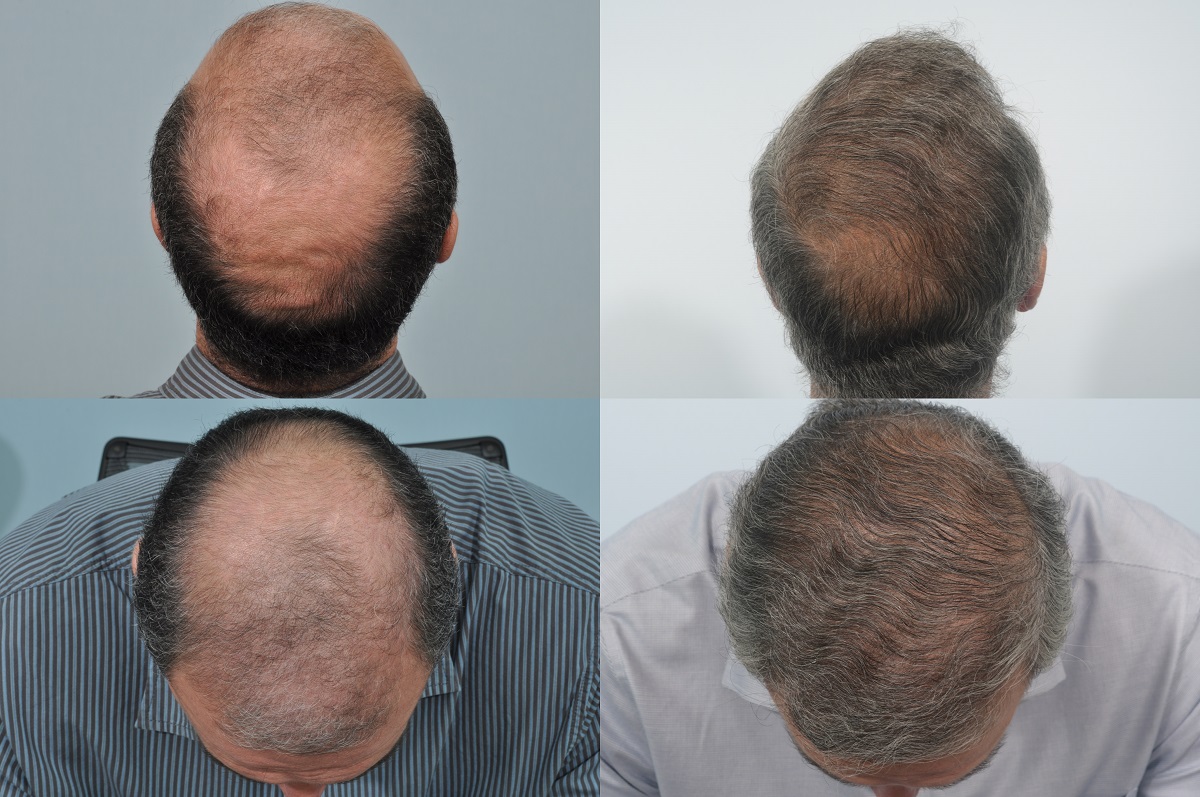Table Of Content

A hair transplant is a procedure to move hair to an area that's thin or bald. Surgery is a last resort and there are a number of ways you can disguise thinning hair. If a medical condition like a thyroid disorder or alopecia areata is causing your hair loss, FUT surgery likely won’t be an option. You may need to schedule follow-up appointments for inspections of the donor and recipient sites. You should begin seeing results within a few months, with full growth being realized by 12 months.
Shock hair loss
The first transplant was performed in 1939 in Japan with single scalp hairs. In the following decades, physicians developed the “plug” technique. Worldwide, about 60 percent of men and 50 percent of women experience some form of hair loss. To address this, people often use over-the-counter products, including topical treatments like minoxidil (Rogaine). This article will help you understand the results of a hair transplant, what to expect, and types of procedures. You should contact the clinic where you had your hair transplant as soon as possible if you have severe pain or any unexpected symptoms.

Everything You Need to Know About Hair Transplants
The surgery is considered generally safe and can create a natural-looking result if done properly by a trained surgeon. The surgery leaves a scar at the site of hair extraction, so if you usually wear your hair short, FUE surgery might be a better option. Hair transplant cost is one of the most common questions we come across with new patients and for good reason. Many of our patients state that the results are priceless, but of course, we know that’s not true.
What are the side effects of hair transplant surgery?
If you had an FUT transplant, you may be asked to come back the next day for a professional hair washing. It’s a good idea to keep your scalp hydrated, so drink lots of water. You can also use a spray bottle with saline to keep the area moist.
Find Your Surgeon
This procedure is capable of quickly covering large areas of baldness and is customized for each individual patient. The size of the flap and its placement are largely dependent upon the patient's goals and needs. Just before surgery, the "donor area" will be trimmed short so that the grafts can be easily accessed and removed. When grafts are taken, your doctor may periodically inject small amounts of saline solution into the scalp to maintain proper skin strength.
How much does a hair transplant cost? The surgeons break it down - British GQ
How much does a hair transplant cost? The surgeons break it down.
Posted: Fri, 15 Dec 2023 08:00:00 GMT [source]
There will be scarring
This can check for things going on in your body that may be causing your hair loss. Your dermatologist can quickly and easily take what is needed for the scalp biopsy during the consultation. Dermatologists specialize in conditions that affect our skin, hair, and nails, so they know a lot about hair loss. Many also perform hair transplants and can tell you whether you are a good candidate for a hair transplant. Although sometimes hair shaving or trimming is done during the procedure, some surgeons may ask you to shave or trim the hair on the donor site before you come to the office for the procedure.
Most people who have hair transplants notice substantial hair growth in the areas where hair was transplanted within a few months. Sometimes more than one procedure needs to take place for more satisfying results. If you need more than one procedure, you'll likely have to wait a few months between sessions to allow your scalp to heal. Once the hair transplantation is fully done, it can take up to two years to see completely final results.
Frequently asked questions about hair transplants
If you’re just starting your research into hair transplantation, you’re probably wondering about the difference between an FUE and an FUT. While these procedures are similar, and both offer completely natural-looking results, there are some key differences to consider. A hair transplant procedure from Bosley is the proven, permanent solution to genetic hair loss.
Scalp reduction is ideal for bald areas on the top and back of the head. Sometimes providers use scalp reduction and hair implants together to achieve full coverage. Like grafting, scalp reduction usually only requires numbing medication on the scalp. Hair transplant surgery may be a good option for people who have hair thinning and hair loss.
In FUE surgery, your surgeon will remove individual hair follicles directly from your scalp, rather than first taking a strip of scalp skin. Men with androgenic alopecia (commonly called male pattern baldness) make the best candidates for FUT. In men, this condition commonly appears in the Norwood pattern or an M-shaped hairline with hair loss at the temples.
Also, the hair follicles can be removed from several areas, rather than from one single site, so hair thickness at the donor sites is not affected. After hair transplantation, you should sleep on your back with your head raised at 45 degrees for the first week. This is to avoid friction of the newly transplanted follicles with the pillow. Hair transplant operations are considered one of the successful treatments to get rid of the problem of baldness. Its success rate ranges between 90 to 95 percent, and we see many patients who are satisfied with their results as long as they had it done by a doctor with sufficient experience.
Gender-affirming hair transplants: How it works, and what to expect - Medical News Today
Gender-affirming hair transplants: How it works, and what to expect.
Posted: Tue, 14 Nov 2023 08:00:00 GMT [source]
The follicles are then individually transplanted to the recipient areas. Depending on the size and shape of the donor area and the demand for grafts, FUT may be the preferred method of graft extraction. With these considerations in mind, it’s usually recommended that you try other hair-loss treatments, such as the over-the-counter minoxidil lotion, before you undergo a hair transplant. If nonprescription options aren’t effective, talk to your health care provider about the prescription medication finasteride. Many men taking finasteride experience a slowing of hair loss, and some show some new hair growth.
There is also a risk of scarring on both the donor area and the area of the transplant. A person should speak with their surgeon about these risks before they decide to have the procedure. A surgeon makes an incision to remove the donor follicles, and they make tiny incisions on the scalp in which to place the follicles. With any incision, there is a risk of infection or excessive bleeding. The ASPS also warn people to expect that they may need a “touch-up” procedure.
Next, the surgeon’s team divides the strip of removed scalp into 500 to 2,000 tiny grafts, each with an individual hair or just a few hairs. The number and type of graft you get depends on your hair type, quality, color, and the size of the area where you’re getting the transplant. As with any surgical procedure, the success of your hair transplant depends on you following your doctor’s guidance. Patients typically recover quickly from this outpatient procedure and see the full results of their transplant within 12 months.
During the procedure, local anesthesia is administered to minimize pain. Other postoperative surgical complications might include infection, wound dehiscence (edges of wounds cracking open and no longer meet), skin necrosis (tissue death). People traveling overseas to save money on hair restoration surgery is a popular example of medical tourism. When traveling internationally for elective cosmetic surgery, ensure the destination is safe and your surgeon is well-accredited.

No comments:
Post a Comment